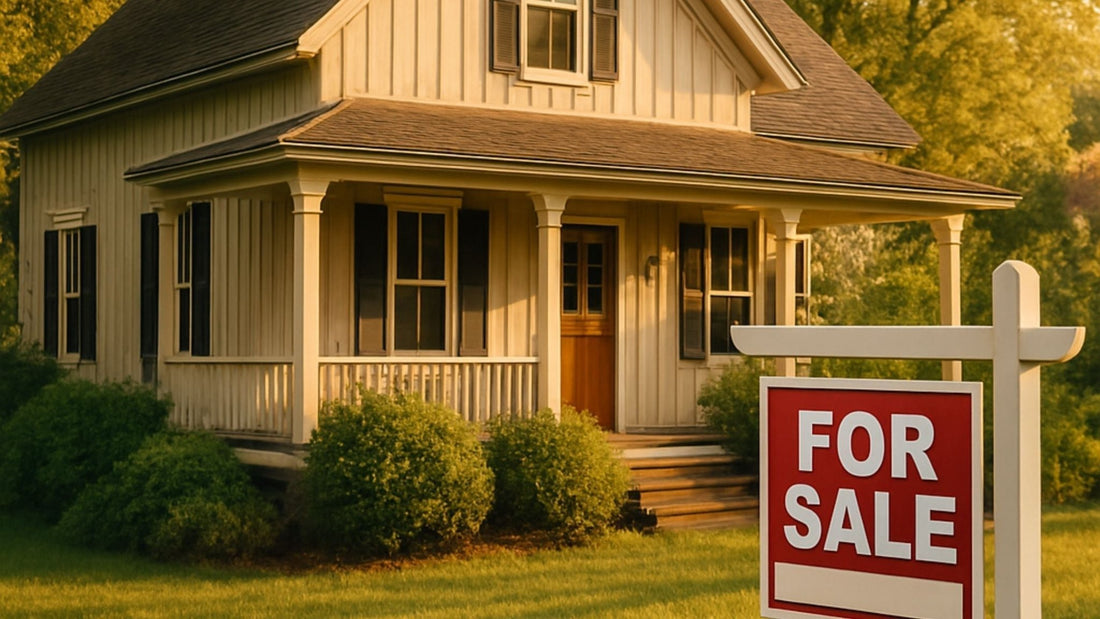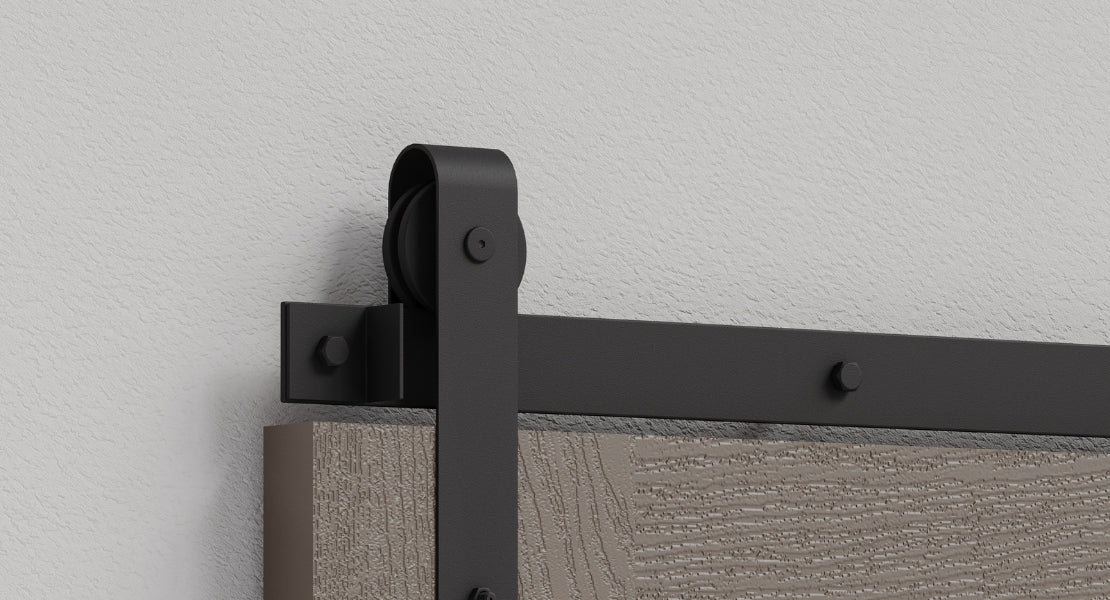
Do Barn Doors Increase Home Value? How to Weigh the Cost of Investment
You're standing in your bedroom doorway, imagining that beautiful barn door you've been pinning on Pinterest for months.
But there's this nagging thought: you're planning to sell in three to five years. Will buyers love it as much as you do, or will they see it as something they'll need to rip out?
The internet doesn't help. Pinterest makes barn doors appear to be the key to a $50,000 home value increase. Reddit threads refer to them as "so 2016." Real estate blogs give you the classic "it depends" non-answer.
Here's the thing—this isn't really about whether barn doors are beautiful. They obviously are, or you wouldn't be considering them. This is about cold, hard resale math. Will this decision cost you money when you list your house, or will it help you sell faster for more?
Let's examine the actual data, market trends, and buyer behavior patterns to provide an honest answer. Spoiler: it genuinely depends on factors you can control.
The Short & Fast Answer (If You're Skimming)
Barn doors can increase home value, stay neutral, or actually decrease appeal depending on:
- Which room do you install them in
- Your local market's design preferences
- The quality of installation and barn door hardware
- Who's likely to buy your home
- How the rest of your house is styled
Best case scenario: Primary bedroom barn door in a modern farmhouse market equals neutral to slightly positive impact.
Worst-case scenario: Kid's bedroom barn door in a traditional Colonial neighborhood might turn buyers off.
The consensus from real estate professionals: Barn doors are "neutral to slightly positive" when done right, "potentially negative" when done wrong.
Now let's dig into the details that actually matter.
What's the Return on Investment of a Barn Door?
Let's talk actual numbers, because vague feelings don't help you make decisions.
Installing a barn door costs somewhere between $300 and $600 if you're doing it yourself with mid-range interior barn door hardware. Professional installation with quality hardware runs $700 to $1,200 per door. High-end custom doors with designer hardware can hit $1,500 to $3,000.
Now for the return on investment. Remodeling Magazine's annual Cost vs. Value Report tracks what homeowners recoup on various improvements. They don't specifically track barn doors, but decorative interior updates typically return 50-75% of their value at resale.
Based on market analysis and real estate trends, barn door ROI breaks down like this:
In favorable markets (modern farmhouse areas, younger demographics), expect neutral to maybe 25% return. You might recoup $150 to $300 of a $600 investment. In neutral markets, expect nothing—it doesn't add value, doesn't subtract.
In unfavorable markets (traditional neighborhoods, older buyer demographics), it's potentially harmful because some buyers mentally calculate the cost of replacing it with a traditional door.
Compare that to other improvements:
- Minor kitchen remodel: 72% ROI
- Bathroom remodel: 62% ROI
- Fresh interior paint: 107% ROI (but then this is more affordable to do)
- Barn doors: 0-25% ROI in best circumstances
The truth you need to hear: you're not installing barn doors to increase home value. You're installing them because you want to live with them for the next three to seven years. Any resale benefit is a bonus, not the goal.
Which Rooms Help (and Which Hurt) Resale
Not all barn door locations are equal in buyers' eyes. Here's what the data shows about different applications.
Rooms Where Barn Doors Are Neutral to Positive
Primary Bedroom is your best choice.

It signals "updated" and "modern" in listing photos, which matters for online curb appeal. Most buyers see it as a design choice rather than something they need to replace immediately. This works especially well in open-concept primary suites where the door becomes an architectural element. Market data suggests this is neutral to slightly positive.
Pantries and Kitchen Storage get positive reactions because they're highly functional. The benefit explains itself instantly—space-saving, accessible, practical. These photograph beautifully and buyers immediately understand the choice. Consensus: neutral to positive.

Laundry Rooms are neutral territory. They're often behind the scenes, so style dependence is lower. The space-saving benefit is obvious, and it's not a room where buyers have strong emotional reactions.

Home Offices or Dens are context-dependent. In open-concept homes where defining spaces matters, barn doors make sense. They work well in lofts or converted spaces. But in traditional floor plans with separate room structures already in place, they can feel unnecessary.

Where Things Get Dicey
Children's Bedrooms make parents worry about privacy and sound. Even with locks and weatherstripping, buyers with kids often mentally calculate the cost of switching back to traditional doors. This reads as trendy rather than timeless. Market feedback: neutral to slightly negative.
Guest Bathrooms trigger immediate privacy concerns. Even when locks are clearly installed, buyers question the choice. Traditional doors are expected in bathroom applications, and deviating creates friction. Market feedback: negative unless it's clearly a powder room where privacy is less critical.
Main Living Areas can feel gimmicky if there's no clear functional reason. In loft-style open plans, they make sense for creating flexible zones. In traditional layouts, they look forced. Very style-dependent.
Formal Spaces like dining rooms or studies often read as mismatched. If your home has formal architecture—crown molding, traditional proportions, classic details—barn doors clash rather than complement. Market data: negative in traditional homes.
Market-by-Market Reality
Where you live dramatically affects whether barn doors help or hurt your resale value.
Markets where barn doors are assets:
- Nashville, Austin, Portland, Boise, Denver (modern farmhouse strongholds)
- Emerging urban markets with loft conversions
- Suburban areas with newer builds (post-2010 construction)
- Vacation/second home markets in mountain towns or lake areas
- Neighborhoods with younger buyer demographics (first-time buyers, 30-45 age range)
Markets where barn doors stay neutral:
- Most major metros with diverse architecture
- Suburban areas with mixed housing stock
- Mid-sized cities without strong design identity
Markets where barn doors can be liabilities:
- Historic districts with strict architectural character (Charleston, Savannah, specific Boston neighborhoods)
- Established traditional suburbs are heavy on Colonial, Tudor, or Victorian architecture
- Luxury markets where trends are viewed skeptically
- Areas with older buyer demographics (retirement communities)
- Formal, conservative markets where change happens slowly
How to know your market: Pull up recent listings in your immediate neighborhood. Count how many feature barn doors in listing photos. If you're seeing them regularly, you're in favorable territory. If you never see them, that's information you shouldn't ignore.
The Quality Factor Nobody Talks About
Here's what consistently shows up in buyer feedback: bad barn doors hurt more than no barn doors.
What "bad" looks like:
- Visible hardware that's clearly cheap (thin metal, wobbly track systems)
- Doors that don't slide smoothly during showings
- Poor installation with visible gaps or misalignment
- Hardware finishes that clash with the home's other fixtures
- Doors that scream DIY disaster rather than design choice
What "good" looks like:
- Solid, smooth operation that feels intentional
- Quality modern barn door hardware with actual weight and substance
- Professional installation that looks like it belongs
- Finishes that coordinate with existing door hardware throughout the house
- Doors that fit your home's overall style story
A $150 barn door hardware kit ordered online reads completely differently from a $400 quality system from a reputable supplier. Buyers notice, even if they can't consciously articulate why one feels cheap and the other feels intentional.
If you're installing barn doors with any thought to resale, budget for quality. Cheap barn doors are worse than keeping your hinged doors.
Who Loves Barn Doors and Who Doesn't
Buyer demographics matter more than you might think, according to market analysis.
Buyers who respond positively:
- Ages 28-45 (millennials and younger Gen X)
- First-time buyers and young families
- People influenced by Pinterest/Instagram design trends
- Buyers specifically seeking "updated" homes
- Those comfortable with open-concept living
Buyers who respond neutrally or negatively:
- Ages 60+ (prefer traditional features)
- Buyers seeking formal, traditional aesthetics
- Multi-generational families (privacy concerns)
- Conservative investors or flippers
- Buyers in markets where barn doors are uncommon
The takeaway: If your likely buyer demographic skews younger and design-conscious, barn doors are safer. If you're in a market with older buyers or strong traditional preferences, they carry more risk.
Should You Actually Install Them?
Install barn doors if:
- You'll be in the home for 3+ years and will genuinely enjoy them
- Your market leans modern, farmhouse, or casual rather than traditional and formal
- You're installing in the primary bedroom or pantry rather than riskier locations
- You're willing to invest in quality hardware and professional installation, or skilled DIY
- You're styling your whole home cohesively, not randomly adding one barn door
Skip barn doors if:
- You're selling within a year (not enough time to justify the cost)
- Your market is traditionally formal, and you've seen zero barn doors in recent neighborhood listings.
- You're considering kids' rooms or guest bathrooms
- You can't afford quality hardware (cheap is worse than hinged)
- Your home's overall style doesn't support the aesthetic
Compromise option: Install a barn door in your primary bedroom where you'll enjoy it daily. Keep other bedrooms traditional to minimize resale risk. You get what you want, and you've contained any potential downside.
Design for Life, Not Resale
The honest answer to whether barn doors increase home value is: probably not significantly, but they probably won't hurt either if you're strategic about location and quality.
But that's actually not the right question.
The better question is: will you enjoy this barn door for the years you're living in this house? Because that's the real return on investment—the daily experience of living in a space you actually love.
If barn doors make your home more functional and beautiful for you right now, that's worth something real. The resale impact is secondary. You just need to be smart about which rooms you choose, invest in quality barn door hardware that feels substantial, and make sure the style fits with your market's general preferences.
Design your home for the life you're living today, not for the theoretical buyer you'll meet three years from now. That buyer is going to change things anyway. They always do.


